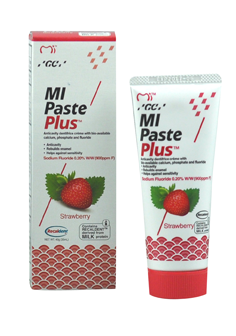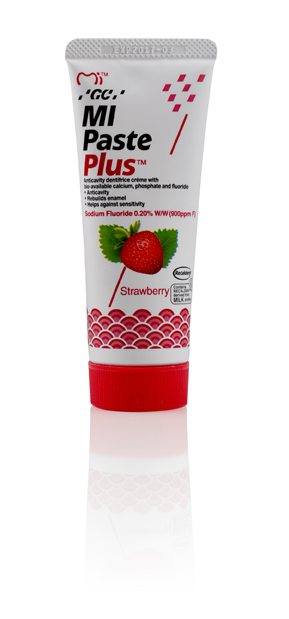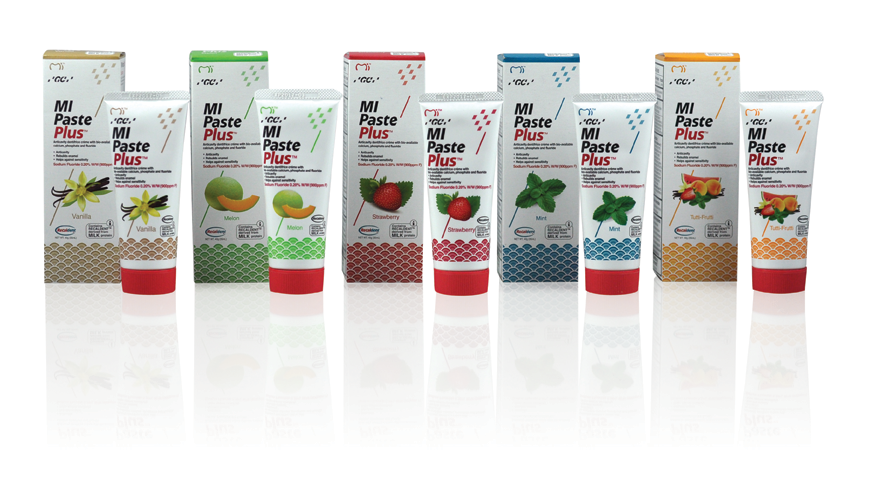How MI Paste Plus reverses and prevents white spots
When our teeth lose the necessary minerals that keep them healthy, white spot lesions form. This demineralization can ultimately lead to cavities. Researchers found that MI Paste Plus not only prevents the effects of demineralization, but reverses them as well.

When our teeth lose the necessary minerals that keep them healthy, white spot lesions form.
This demineralization can ultimately lead to cavities. Researchers found that MI Paste Plus not only prevents the effects of demineralization, but reverses them as well.
Continue to the next page to learn:
1) Why white spot lesions occur in orthodontic patients
2) Why treatment of white spot lesions is not just a cosmetic issue
3) How MI Paste Plus works
4) The effect of MI Paste Plus on white spot lesions in orthodontic patients

Why white spot lesions occur in orthodontic patients

When our teeth lose the necessary minerals that keep them healthy, white spot lesions form. The acid triggered by the breakdown of sugars and carbohydrates is what causes these minerals, such as calcium, to leech from teeth, technically called enamel decalcification.
Decalcification is a precursor to the formation of caries, which is a precursor itself to cavities. It most often occurs on the smooth enamel surfaces of teeth, especially in the gingival third of the crown.
It is often triggered by fixed orthodontic appliances and prolonged exposure to plaque, and can occur as early as one month after the placement of orthodontic appliances.
Although white spot lesions can be present in people who are not undergoing orthodontic treatment, orthodontic patients show increases in new lesions and the severity of preexisting lesions. (About 50 percent of orthodontic patients develop white spot lesions compared to 24 percent of people not undergoing orthodontic treatment.)


Why treatment of white spot lesions is not just a cosmetic issue
Luckily, the formation of white spot lesions halts just as quickly as it begins, often upon the removal of appliances. Through patients’ diligent oral hygiene efforts, lesions can be inactivated and regressed over time.

Although fluoride can help prevent white spot lesions by remineralizing the surface of teeth, it is gradual surface abrasion that leads to regression of white spot formation. Therefore, it is advised to implement fluoride treatment at the beginning of orthodontic cases, rather than at the end, when a high concentration of fluorides restricts the passage of ions into the deeper layers, which are more affected than surface layers.
Clinicians have sought a solution to this problem for decades, and many have proposed fluoride treatment and fluoride-releasing materials before and during therapy when the teeth are at their strongest. Other recommendations include educating patients about ideal oral hygiene practices and reinforcing that information, providing patients with fluoridated products such as toothpastes, varnishes, and mouthwashes, and fluoridating water supplies. However, these options only work when patients are compliant. More often, they are hindered by patients’ inaction.
White spot lesions are not just a cosmetic issue: they are a sign of enamel demineralization and a precursor to caries. If left untreated, caries can lead to cavities in the teeth. Preventing and targeting white spot formation early is an important preventive step in oral health care, mitigating the need for further restorative treatment in the future.




How MI Paste Plus works

MI Paste Plus from GC America had been shown to reduce white spots. Although it doesn’t circumvent the need for patient compliance, clinicians hope that it encourages patients to adhere to its instructions, since it’s a new product.
MI Paste Plus releases important minerals, such as calcium and phosphate, and helps in saliva stimulation, which is essential for the mouth’s natural pH balance. MI Paste Plus contains casein phosphopeptide-amorphous calcium phosphate (RECALDENTTM), a milk-derived protein and a breakthrough in oral health care. The special protein helps to maintain a high concentration of gradients of calcium and phosphate on the tooth. It is believed to provide a new way to reduce and prevent the decalcifications that develop during orthodontic treatment.


The effect of MI Paste Plus on white spot lesions in orthodontic patients
Study recruits included 60 patients who had permanent dentition and had not used fluoride extensively in the past. Researchers were confident that the study participants would use the paste as directed.

The 50 patients who completed the study were first assessed for risk of caries before being administered a fluoride paste and placebo every day for four weeks. They were analyzed for caries, cavities, and white spot lesions before treatment and then every four weeks after for a total of 12 weeks. Patients asked to administer the paste with a fluoride tray for three to five minutes a day at night after brushing. Photos recorded the presence or absence of white spots in both groups. Patients were also scored on a scale from zero to six for their level of caries or cavities.
MI Paste Plus showed that it not only prevents white spot lesions, but treats them as well. It reduced white spots on the gingival third of teeth, while the placebo had the opposite effect, leading to more white spot lesions and failing to treat the ones already present.
At the beginning of the study, the 26 MI Paste Plus patients had decalcification index scores of 271. At the end, the scores were down by 53.3 percent to 126. The placebo group had the opposite results: the 24 patients started with a decalcification index of 135 and raised by 91.1 percent to 258.
MI Paste Plus to prevent demineralization in orthodontic patients: A prospective randomized controlled trial. American Journal of Orthodontics and Dentofacial Orthopedics. November 2011. Vol. 140, Issue 5.

